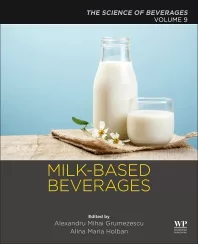Heaven Hill Brands releases limited-release bourbon
Bourbon pays homage to Treasury Agent John E. Fitzgerald
Heaven Hill Brands, Bardstown, Ky., announced the one-time release of John E. Fitzgerald Very Special Reserve Bourbon. Comprised of 12 barrels of wheated bourbon produced at the Stitzel-Weller Distillery, original home of Heaven Hill’s Old Fitzgerald and ancestor of the Larceny brand, the ultra-rare release will offer an extraordinary sensory experience and a glimpse at the DNA of bourbon lore, the company says.
Heaven Hill acquired the Old Fitzgerald line of wheated bourbons in 1999, seven years after these barrels were filled and put up in the Stitzel-Weller rickhouses. After Heaven Hill acquired the Old Fitz line, these barrels were transferred to Warehouse Y at Heaven Hill’s Bardstown campus where they aged on the first floor, allowing long, slow and balanced maturation, it says. They were transferred into inert tanks in 2013 to arrest the aging process and preserve the taste until they were bottled.
The John E. Fitzgerald Special Reserve is available in a 375-ml bottle to maximize the limited supply of 3,000 bottles that will retail for of $300 each. It will resonate with bourbon history lovers and aficionados who understand the connection of the bottling to the original Old Fitzgerald family and to the Larceny brand that Heaven Hill launched to honor the legend of John E. Fitzgerald, the company adds.
The legend goes that Treasury Agent John E. Fitzgerald was allowed free access to the bonded bourbon warehouses and helped himself from only barrels containing the finest bourbon. The agent’s selections became known around the distillery as “Fitzgerald barrels” and were used to create a softly wheated bourbon known as “Old Fitzgerald.” The agent’s larcenous behavior was kept secret until the unveiling of the Larceny line, which revealed his story in full. John E. Fitzgerald Very Special Reserve honors the superb taste of this lawless gauger and the legacy of the Old Fitzgerald line of distillers, who have exceeded the agent’s already high standards, the company says.
The 375-ml bottles resemble cut glass crystal with the label information etched directly onto the glass, along with a gold and platinum key graphic. This hearkens back to the Larceny logo — a key — which commemorates Fitzgerald’s role as the treasury agent who held the keys to the warehouse, the company says. The bottles have an ornate satin finish metal closure with a cork, and a strip stamp on the neck and the face label both prominently feature the 20-year-old age statement. Additionally, each bottle comes packed inside a handmade wooden box with die-cut keyholes and hinged doors that close with magnets.
The 12 original Stitzel-Weller barrels were dumped together and bottled at 45 percent alcohol by volume. The barrels were not chill filtered, meaning the whiskey retains more of the natural esters and fatty acids than whiskey that has been chill filtered to remove these flavor compounds, providing a richer mouthfeel, the company says. John E. Fitzgerald Very Special Reserve offers rich cocoa and vanilla notes with a long, refined finish and the softness that a wheated mashbill provides, it adds.
“With the second largest inventory of bourbon in the world, and one of the broadest ranges of styles, ages and proofs in the industry, it is rare for Heaven Hill to release barrels not produced by the company,” noted Susan Wahl, senior brand manager for Whiskeys at Heaven Hill Distilleries, in a statement. “Because these barrels represent the DNA of our Old Fitzgerald and Larceny, and because the original Stitzel-Weller distillery is so highly regarded by those in the know, we felt like the release of the John E. Fitzgerald Very Special Reserve would provide both context and credibility for the Old Fitz and Larceny bottlings.”
Heaven Hill Co-Master Distiller Denny Potter stated that “these 12 barrels represent a golden age in bourbon history, but also tie the past into our current Larceny and Old Fitzgerald brands. The bourbon is the renowned wheated mashbill that Pappy Van Winkle developed for Old Fitz at Stitzel-Weller. Its aging has been carefully managed to ensure it will be at its best, with two different aging regimens and locations so that it will not be over-aged or tannic.”
Looking for a reprint of this article?
From high-res PDFs to custom plaques, order your copy today!






